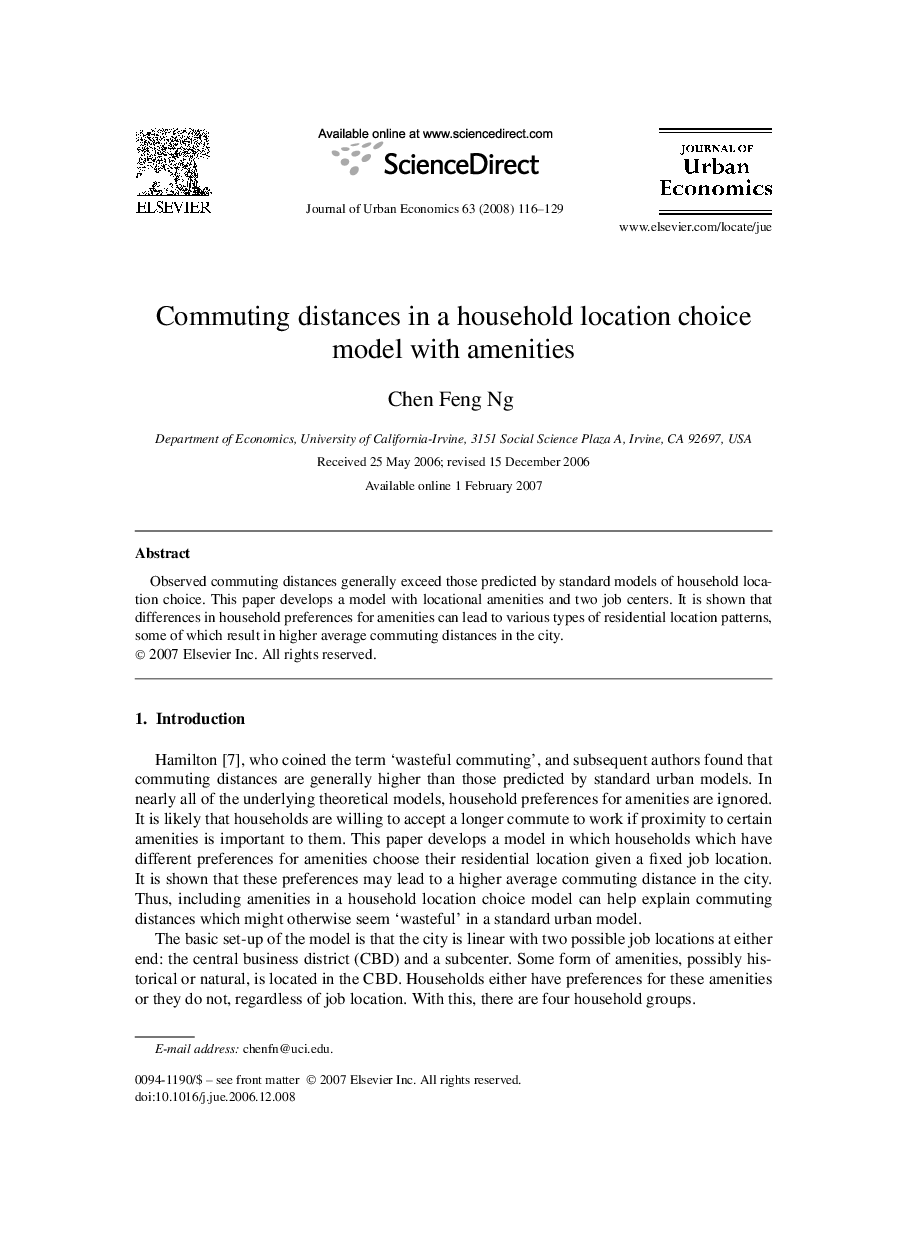| Article ID | Journal | Published Year | Pages | File Type |
|---|---|---|---|---|
| 971623 | Journal of Urban Economics | 2008 | 14 Pages |
Abstract
Observed commuting distances generally exceed those predicted by standard models of household location choice. This paper develops a model with locational amenities and two job centers. It is shown that differences in household preferences for amenities can lead to various types of residential location patterns, some of which result in higher average commuting distances in the city.
Related Topics
Social Sciences and Humanities
Economics, Econometrics and Finance
Economics and Econometrics
